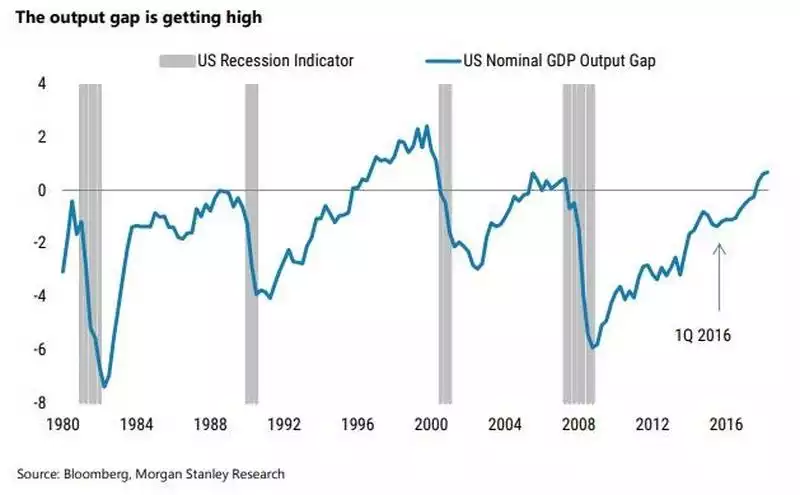Morgan Stanley – Just FOMO Driving Markets
News
|
Posted 08/04/2019
|
4925
A rebound in the headline US jobs report after last month’s dismal effort saw US shares continue their upward trend this year. Indeed the S&P500 is getting very close to the highs it posted last September before it crashed by 20% into Xmas thereafter. The headline was good but the market ignored the poor wage growth and temporary hiring trend behind it along with other poor hard economic data during the week leading up to it. So outside of the well documented reason of Fed stimulus, what is driving this market amongst weak fundamentals?
According to Michael Wilson, Morgan Stanley’s Chief US Equity Strategist yesterday, it’s FOMO.
“As equity markets move relentlessly higher in the face of mixed economic and earnings data, institutional investors seem preoccupied with what everyone else is doing, trying to figure out whether every last dollar is already in the market or if there’s more to go. To say that FOMO – the Fear of Missing Out – is alive and well would be a gross understatement. My experience tells me that when investors are more focused on what others are doing than on fundamentals, the trend has probably run its course. Naturally, this anxiety was also present in December, but on the downside. Then it wasn’t Fear of Missing Out, it was just plain fear!
I think the disappointing data in the US will keep coming, both from the economy and from corporations when they report 1Q results this month. Unlike in January, I doubt bad fundamental news will be good for stocks any more, given significantly higher valuations today and the fact that the Fed can’t pivot any further at this point without signalling rate cuts. Historically, the first rate cut is a red flag for stocks because it portends even weaker growth, rather than the positive inflection point that comes from a pause.”
Whilst everyone blames the market crash last year on the Fed making a ‘mistake’ hiking and tightening too fast too far, he says they were “simply responding, appropriately, to the real mistake, which was enacting a massive fiscal stimulus when the economy was already running at full employment and growing just slightly above potential GDP.” That has pushed the US nominal output gap (a comparison between actual GDP (output) and potential GDP (maximum-efficiency output)) into overheated territory.

When you overshoot potential that inevitably leads to margin pressure for companies. The chart below clearly shows what has happened historically, and yet again another recession warning.
“We’d point to three excesses in particular that are hurting margins – labor costs, above-trend capital spending, and inventory bloat. Furthermore, while a trade deal with China may be coming, we’re likely never going back to the old relationship, and that means permanently higher costs for US corporations as they rethink their supply chains.
The bottom line is that the Fed has fixed the tight financial conditions which were largely responsible for December’s overshoot to the downside. However, it can’t roll back the corporate cost pressures created by the fiscal stimulus. These pressures now have to play out in what we’ve been calling for since last fall – a profits recession.
I think it’s misguided to assume that the profits recession has magically ended, and I see an increasing chance that it turns into an economic one if companies decide they want to protect profits by cutting labor, capex and inventory. Perhaps the Fed understands this better than investors, who may be merely experiencing a serious bout of FOMO.”
On Friday we highlighted again the enormous corporate debt pile sitting behind all this. As companies see reduced earnings, that debt servicing pressure builds. As companies reduce their workforce or further stall wage growth that then adds pressure to servicing all the private debt as well. As company profits fall they pay less tax, adding to already forecast deficits, adding to the US government’s USD22 trillion debt pile and reducing income to service the debt on that. You can well see where this all ends.